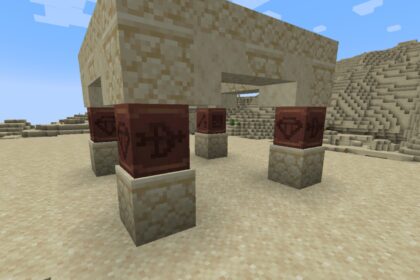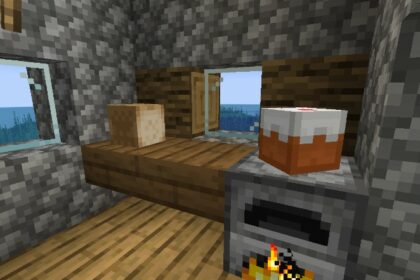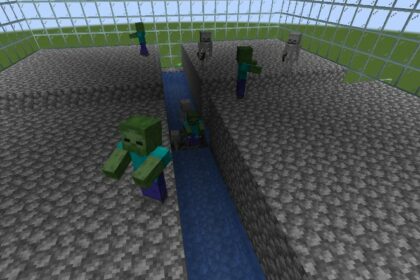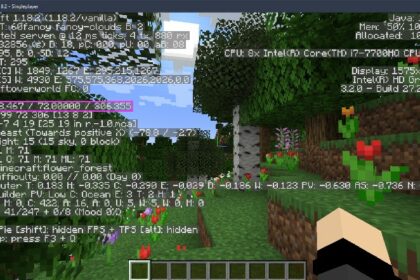Among the diverse ways of playing Minecraft, there’s one that drifts a bit from the conventional gameplay players are used to. Building and making villages is an alternative way of enjoying and exploring Minecraft’s content.
Still, village building is an in-game activity with various hardships.
For instance, you’ll need a large number of resources to take the first steps into this play style. Typically, players on a mid to late-game status can progress their villages steadily.
Among the obstacles you’ll find when building a village, gathering enough villagers is definitely at the top. Additionally, for a village to keep growing, its population needs to expand in numbers gradually.
Upgrading your village’s population is vital to its expansion, but it also positively impacts production and access to rare items. Therefore, mastering how to spawn, gather, and assign villagers is crucial in this play style.
This article will discuss how to spawn villagers in Minecraft and why it’s essential to the village-building gameplay.
The method below concerns Minecraft in a vanilla play style, without cheats. However, you can spawn villagers in the creative mode by acquiring the “villager spawn egg” and using it on the ground.
Villages
In Minecraft, naturally-generated villages are organized groups of buildings. You’ll only spot them in the Overworld dimension when exploring the game world.

The only mobs that inhabit a village in the game are villagers, animal farms, and iron golems. The main benefit of finding a village during exploration is having access to its loots and traders.
You can also use any bed inside a village to rest your character. However, this will reset your spawning location.
All villages have a few houses for production and trading, such as farms, libraries, workshops, etc. These structures require a working villager to fill a specific role. In this sense, a library needs a librarian, and a black smithy requires a blacksmith, a farm needs farmers, etc.
To trade with the village, you’ll need to interact directly with the primary worker of a production house. So, when interacting with a cartographer, you’ll be able to see their stock.
The only currency you can use in villages to buy products is emeralds. You can sell items, though, exchanging them for emeralds.
Villages are the only area where you can start raids. To do so, enter a village’s vicinity while having the “Bad Omen” curse, which you get after slaying a pillager patrol captain.
Villagers
The main inhabitants of a village, the villagers, are passive human-like mobs with civilized behavior. They’re required to fill in professions in a village, making them vital to any village-growing gameplay.

These mobs spawn inside villages. So you won’t ever stumble across a lone villager in the woods or any other vacant location. The only villager-like NPC you might find roaming randomly are the wandering traders.
As passive mobs, villagers flee from any combat situation when provoked.
Professions
Inside villages, you might find unemployed villagers. To assign them a profession, you’ll need to place a “job site” block, which they’ll then interact with, receiving a related role. The possible professions in a village and their respective “job site” blocks are:
- Armorer – Blast Furnace
- Butcher – Smoker
- Cartographer – Cartography Table
- Cleric – Brewing Stand
- Farmer – Composter
- Fisherman – Barrel
- Fletcher – Fletching Table
- Leatherworker – Cauldron
- Librarian – Lectern
- Stone Mason – Stonecutter
- Shepherd – Loom
- Toolsmith – Smithing Table
- Weaponsmith – Grindstone
One method of forcing a villager into a specific profession is locking them up in a confined space with the job block you want; eventually, they’ll interact with the block and get a new role.

The only type of villager that can’t get a profession is the “Nitwit.”
Nitwit villagers wake up after every villager has already begun working and just walk around the village without producing anything. They don’t have anything to trade.
Nitwits are randomly generated at birth. In a sort of way, they’re unemployed villagers that won’t take any work, even if you try to force them.
Spawning Villagers
The best way to increase the villagers’ numbers in a village is by breeding them.
After constructing the basis of a village, a specific area will be automatically delineated, representing the area concerning the town. This representation isn’t visual; it considers chunk dimensions.
The first adult villagers inside this determined area will begin their routines and a few days might pass before breeding occurs. Foremost, note if the villager displays a positive “willingness” level.
Willingness
The value of the “willingness” determines if the villager seeks a partner to breed. You can improve this value by assigning food items to villagers. The more food a villager has, the more “willing” they’ll become.

You can easily spot a willing villager because a specific visual effect surrounds them. Villagers with a high willingness level have little hearts wrapping them; whenever they contact another “willing” villager, they begin the breeding process.
After breeding, a villager’s willingness recedes to zero, resulting in total consumption of their food stock.
You can make a villager enter the “willing” mode by providing them either of the following:
- 3 Bread
- 12 Carrots
- 12 Potatoes
- 12 Beetroots
You can provide either of the above. Whenever a villager exceeds their food stock capacity, they’ll throw food at other villagers.
Consequently, a food-rich villager can assist other villagers to enter the “willing” mode.
Naturally, villagers achieve food organically through the village’s farm products. However, the player can encourage breeding by throwing bread, carrots, potatoes, and beetroot at villagers. To throw food, release it from the inventory, making it a dropped item.
Other Requirements
To make villagers breed, you’ll need to tend to a few other requirements apart from enhancing their “willingness” level.
Depending on the number of available beds in the village’s vicinity, you won’t be able to breed villagers. In Minecraft, villagers only breed when there are vacant beds. The reason is that baby villagers require a bed.

It’s also vital that the vacant bed meet some requirements, such as having at least two empty blocks above them. For example, putting upper half-slabs above an empty bed would invalidate the breeding opportunity.
Although slabs visually fill half a block, mobs see them as whole blocks.
When all requirements for breeding are met, villagers will gather in the town square, close to the village’s bell. During this gathering, they’ll contact each other and a “flirting” interaction might occur between two individuals, starting the breeding process.
A baby villager will spawn when the breeding process is successful; they’ll begin wandering around the village as unemployed members. The appearance of baby villagers will depend on the biome they were born in.
When the villager grows up it will take on a profession if any is available or it will remain a nitwit.







